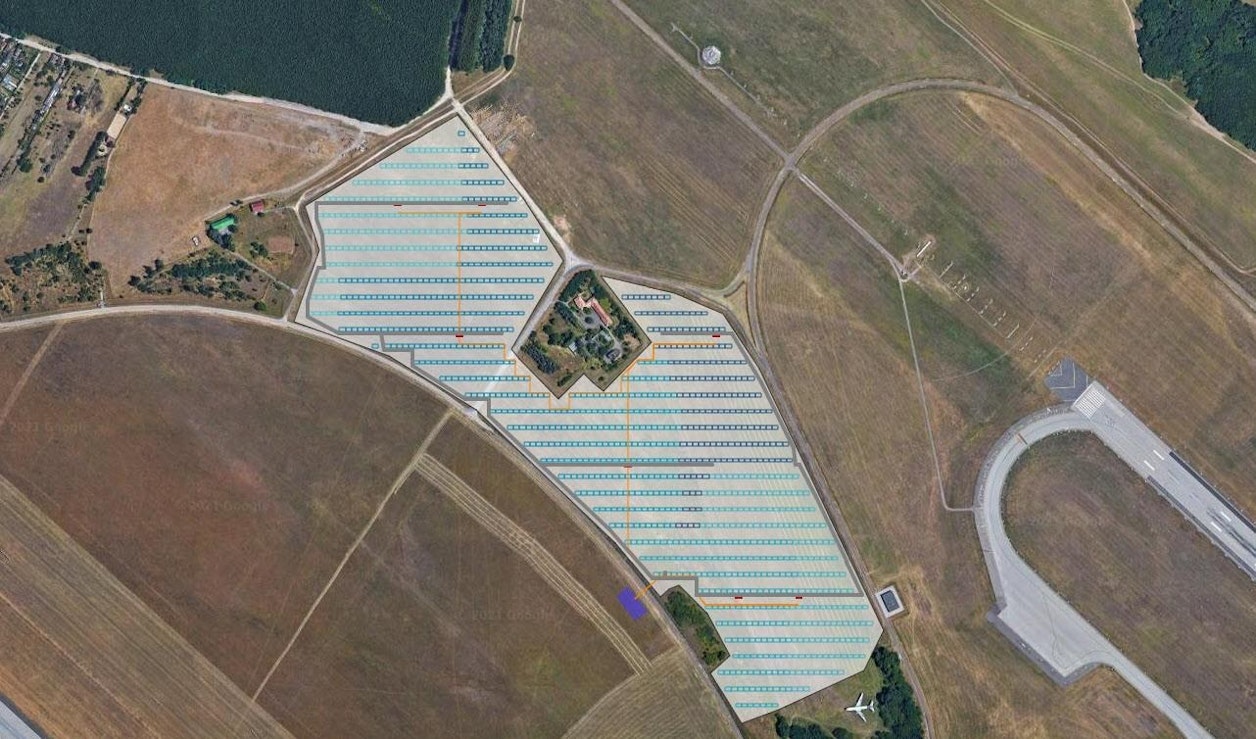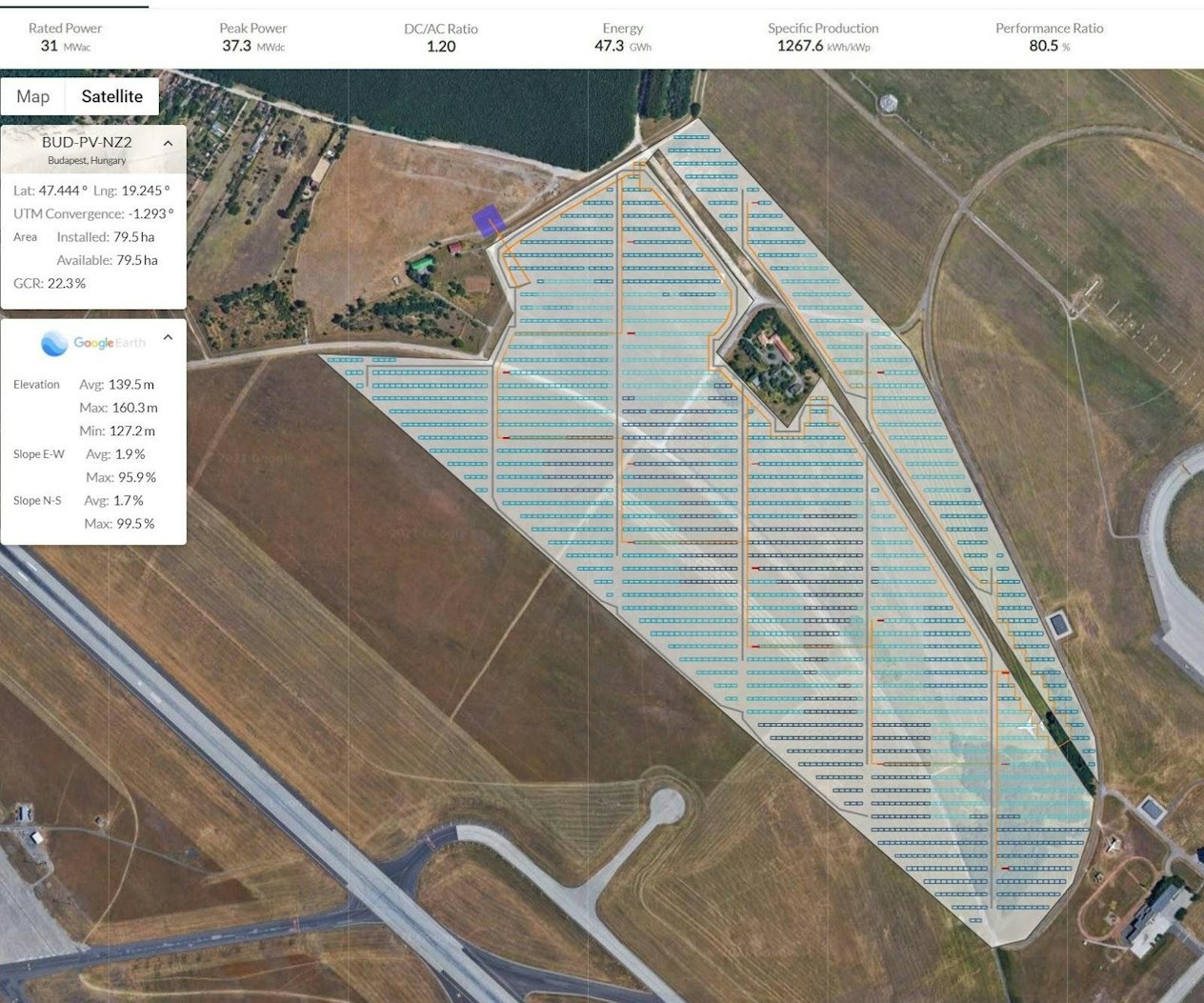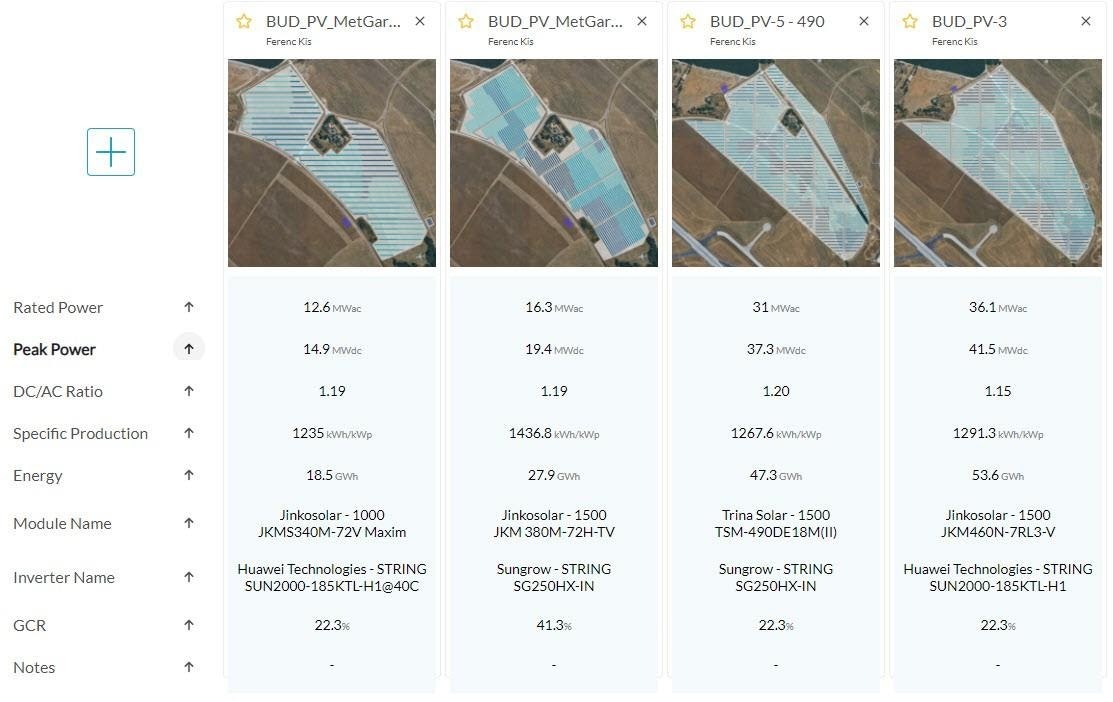Green airports challenge for operators: How to support complex design decisions?
- Published by
9 Aug, 21 / UPDATED 15 Oct, 21
Can aviation really become less polluting? Clean energy at airports could help to achieve this industry-wide goal and install the most obvious renewable power production system: solar photovoltaic. But the list of concerns on green airports are seemingly endless: what about glare, power system stability, airside safety and costs?
We'll go over a real-life case: Budapest airport. We'll design a PV plant on it and perform the basic engineering to get the energy yield estimate. Get in, fasten your seat belts, switch the lights on and off you go!

Get the full energy yield result and methodology of this real-life case. Download it now.
Green airports electrification
Sooner or later these questions should be addressed as the additional electrification of the airport operation by integration of electric ground services equipment (GSEs), electric taxis and other vehicles also require more advanced energy systems. A local micro-grid is a promising solution to achieve zero-emission green airport operation.
However, such an electrification approach presents the engineering challenge of integrating new energy resources, such as solar energy to decarbonize the present system. Solar photovoltaic systems received special attention during the past few years, particularly in international airports because of green engagements and the increasing cost of fossil-fuel generated electricity. This is particularly relevant, as, in May 2021, more than 90 airports in Europe confirmed that they are to achieve Net Zero by 2030.
In 2021 ACI World published a whitepaper on ‘Sustainable Energy Sources for Aviation: An Airport Perspective’. The document provides relevant information to support airports of implications related to adopting and promoting the use of alternative fuels and electrification, but the individual approaches are not assessed from a technical or economic standpoint.

Renewable energy storage at airports challenges
In addition, as airports plan to decarbonize their own emissions, the availability of renewable energy at the electricity grid is paramount, since power consumption is often their greatest source of carbon emissions. All this will drive the airport’s demand for renewable electricity.
Approaches that consider hydrogen would also require large amounts of renewable electricity for their production, and if the manufacture of the fuel is on or near-site this electricity will have to be produced and delivered to the airport.
This concept is explained in detail in the article from 2021 by Yue Xiang 'Techno-economic design of energy systems for airport electrification: A hydrogen-solar-storage integrated microgrid solution' — also visualised by their graph below.

Glare assesment
The first question often asked is the issue of reflections from PV installations. The potential for glare from the solar PV system is a concern to the safe operation of an airport, but well documented by a study published by Sreenath in 2021. It is also important to note that solar reflections are seen in the everyday life of an airport: It can be from glass facades, thousands of parking cars, and even art installations.
But the stakes are high. One remarkable example is from the US, where the glare from the solar canopy project in Manchester-Boston Regional airport affected the visibility of officials in the air traffic control tower. It was reported by CNN in 2012, that solar PV panels of USD 3.5 million worth were covered with tarp temporarily to avoid the glare.
According to the previous research results, most solar panels reflect significantly less light than flat water. The reason for that is Solar PV modules are made to absorb maximum sunlight when sun rays strike glass material on the PV module; it converses an air-glass interface.
Most of the sunlight enters into the glass medium since the material is transparent. Then the sun rays pass through the ethylene-vinyl acetate (EVA) layer, suffering negligible reflection at the interface. Finally, the solar rays reach the PV cell, and the photoelectric effect occurs. Generally, the reflection from the solar PV module is said to remain less than 5%.
For example, fresh snow reflects around 80% of the light striking its surface. Still, it is important to understand that the reflections from solar PV modules increase exponentially at low angles of the sun at sunrise and sunset. Also, it is reasonable to assume that most of the solar reflections are specular in nature since the PV modules have a flat and polished surface. Therefore, glare assessment is a critical step in the design phase of an airport-based solar PV system.
Wildlife impact
Several airports in the US have recently installed large photovoltaic arrays near air-operations areas to offset energy demands. The US Federal Aviation Administration has published guidelines for new solar installations on airport properties.
Although an increased reliance on solar energy will likely benefit airports from environmental and economic perspectives, the use of solar installations should be examined before wide-scale implementation. Determine whether such changes in land use adversely affect aviation safety by increasing the risk of bird-aircraft collisions is the main key take away point.
Photovoltaic arrays could potentially serve as attractants to birds hazardous to aviation because they provide shade and perches for birds, both of which are limited in grassland-dominated airport environments. Dark glass panels such as those used to construct PV arrays also reflect polarized light, which can attract insects, and subsequently, insectivorous birds.
Further, in some situations reflected polarized light may cause structures such as glass panels to be mistaken by some bird species for open water, resulting in mortalities from collisions with these structures or being stranded on surfaces from which they cannot take off.
In 2020, researchers from the Energy Efficiency and Renewable Energy Research Cluster, Universiti Malaysia Pahang published their assessment and mitigation measures potential risk to aviation safety from solar photovoltaics in airport premises. They found that the hazard index is highest for glare occurrence from PV modules, strike from birds in PV sites, and interference to communication systems. All can be handled by careful planning and modelling exercise.
It is concluded that most of the risks need implementation of mitigation measures such as prior glare assessment in the feasible sites, periodic monitoring of bird's activity in the PV array and following safety distance between the PV plant and communication aids.
Green airports MV power system
And the list of technical concerns on aviation safety can not be complete without mentioning the complexity of an airport's Medium Voltage power system. When the assessment of such a large PV system is considered, detailed electrical studies shall address the power quality issues associated with PV arrays, monitoring and control systems, and suitable connection points to the local MV network or the national grid. There have to be systems in place for maintaining the airport MV grid stability and procedures developed in case of faults either on the PV system or the local MV network.
Green airport case study
In 2019 I was collecting some of the best practices worldwide regarding solar PV utilisation at airports. By now, I am taking the next step and looking at the actions needed. In the present study, I assumed an international airport operator, decided on acting on on-site renewable energy generation and aimed for support on finding the optimal site and accompanying technologies.
As module and inverter prices and performances are changing rapidly, designing solar PV systems often requires adjusting site layouts, in the airport environment, the task is even more complex, as aviation safety and other stakeholder needs are also concerned.

The test airport in this case disclosed its carbon footprint for 2019, which consists of 9.000 t CO2e for fossil fuel combustion heating and 10.000 t CO2e as Scope2 emission, arising from electricity. Given the country’s grid carbon intensity, the assumption is that 50 GWh power is consumed at the airport.
For making further analysis I was using our solar design tool to automate and optimize the study, analysis, design, and engineering of photovoltaic plants in all its stages. I had to check various layouts, module types and mounting systems, and this tool helped me to speed up the design and engineering processes of that large-scale solar project.
Conceptual layout
As a first stage, I’ve used the platform for the rapid creation of conceptual layouts. This airport operates two (dependent) parallel runways, 1500 m distance between them, opening a sizable, rather flat grassland area, making it ideal for solar arrays. Big installations and industries, such as airports, consume electricity at medium voltage.
The PV plant will be configured so that it outputs power at the pertinent voltage level. To achieve the supply voltage and minimize electrical losses, step-up transformers are installed. The voltage is increased from 800 V at the string inverters’ output to 20 kV. To ensure adequate safety and control over the PV plant, a switching and breaking station is installed. This interconnection facility includes all the pertinent protection and measurement elements to avoid damage to the plant in the event of any contingency and facilitate maintenance works.

At the first instance, the limiting factor for the solar PV system sizing was the existing perimeter road network. Keeping the present road system and existing objects untouched, such as the buildings of the former heated greenhouse facility —which is abandoned for 15 years now and I was not assuming the removal of the forest patch and the leftovers of a B767 at the control tower—. Here, my assumption was 340W panel + Huawei SUN2000 string inverter combination, and the simulation resulted in rated power 12.6 MWac, Peak Power 14.9 MWdc with an annual power production of 18.5 GWh. The software also generates 12x24 energy production tables available in XLS format.
Are you interesed in the energy yield results and methodology? Download the full report.
Structures

The fixed solar PV systems have a huge literature, but the tracking system installation is not very widespread. From a glint and glare analysis point of view, the changing angle of panels may cause a more complex simulation task, but for my scenario analysis, I was not ruling out this option either.
Demonstrating the advantage of tracking system – in the present case a NextTracker 2V layout – at the very same area, using slightly larger modules, the 380W Jinkosolar with SunGrow string inverters, 19.4 MWac peak power could yield 27.9 GWh power, more than half of the annual consumption of the airport! It is worth comparing the production profiles of the fixed and tracking systems.

Sizing
As a next question, how to make the airport running on 100% renewables? For this, I was using the assumption that maximizing the solar site is the main priority and it is necessary to relocate existing buildings, meteorological equipment and roads. In this theoretical case, using 460W modules, 87.5 hectares of land would be occupied by the power plant and able to produce 53.6 GWh electricity, likely sufficient to supply power for the next decade.

But the life for solar designers is not always that simple, and assuming the first consultations with the meteorological service operator and the fire authority, both the greenhouse building complex should remain plus an emergency road should be opened through the solar array.

The latter measure makes sure that the outside area of the airport is accessible by the heavy fire-fighter trucks on the quickest route possible without detours around the solar plant. Based on the modelling exercise, both requests are possible to fulfil, and by using 490W modules and without entering the safety zones of either runway, 47.3 GWh power production can be secured.

Final touches
The software generated a complete project overview, calculated the number of 76,140 modules needed for the project, the total length of the roads summed up of a distance of 6,275 m, and the volume of low voltage trenches at 400 x 1000 mm dimensions are estimated at 12,399 meters and 4,960 m3.

Assuming that out of the four discussed options, the one with the emergency road option has been selected and investigated from the financial viability angle. For estimating the prices and solar power plant financing the best guidance are those renewable energy auctions, taking place for 2-3 rounds in Central and Eastern Europe.
In Hungary for example a couple of months ago I was summarizing the results of a state-run solar power tender, where 1,500MW installed capacity was bidding. As for prices, it is a good indication that the scale of 50 MW power plants were bidding at a 48-49 EUR/MWh price for a 15 years contract period.
The price is in line with the present market price and this means in the case of the winner projects, no subsidy was requested. In other words, approximately the 26 million EUR investment can secure 47,300 MWh power each year for the airport, also considering that the 80 hectares of land is available and very likely no need to build a 7.1 km of perimeter fence.
CAPEX and LCOE
When financial modelling is concerned, RatedPower solar proposal tool can handle custom solar farm cost templates and calculate the project’s CAPEX and LCOE on the go for a quicker PV plant quoting. There is a separate tab in the Design process and users can add, delete or edit BoQ categories, subcategories and entries and choose the unit they would like to apply to those entries. In this section, users can create price templates from scratch, from RatedPower default BoQ or even clone already existing ones.
Without mathematical models for glare or radar interference assessment and making only very general aviation safety assumptions, I was evaluating the feasibility of a solar photovoltaic power plant at a major Central Eastern European airport, aiming for 100% renewables powered operations. My focus was on assessing various mounting systems, panel and inverter combinations and different footprints of the planned facility.
Results reported that the proposed plant produced average energy of 47.3 GWh annually. The maximum electricity production was observed in May, June, and July as 5,804 MWh, 5,372 MWh, and 6,1128 MWh, respectively. Results also showed that the 37.3 MWdc PV plant reduced an average CO2 emission of 12,000 tons per year (assuming the production fuel mix factor 0.253 kgCO2e per kWh).
Overall, solar PV arrays in green airports may be a good tool to collaborate with the energy transition and decarbonization process, however, a good design will be critical.
If you want to read in full the energy yield results and methodology report, download it here.
What you should do now
Whenever you’re ready, here are 4 ways we can help you grow your solar business and reduce LCOE of your PV plants.
- Get hands-on with a free RatedPower self-service guided tour. If you’d like to learn the ins and outs of how top photovoltaic software can help your engineering team, go ahead and request your free demo. One of our solar experts will understand your current design and engineering workflows, and then suggest practical tips on how to speed up them though the right tool.
- Let's get physical, physical! Learn the latest on renewable energy and PV in the second edition of Pulse, our annual get-together full of technical workshops, inspiring talks from energy leaders and tons of networking. Learn more.
- If you’d like to learn insights, ideas and inspiration for the low-carbon energy transition for free, go to our blog or visit our resources section, where you can download guides, templates and checklists solar successful pros use.
- If you’d like to work with other passionate experts on our team, or learn more about our purpose and corporate values, then see our Careers page.
- If you know another solar designer, developer or engineer who’d enjoy reading this page, share it with them via email, LinkedIn or Twitter.
Related posts
Searching results

